5 Tips to Lighten Your Hiking Load
If you’re worried about your knees or setting a new PR, first take a look at your pack. For every pound of weight you cut from your body, you reduce the pressure on your knees by four pounds, a 2005 in the Journal of Arthritis and Rheumatism found. Lose 10 pounds of weight, and you’ll reduce the load on your body by 48,000 pounds of pressure per mile you walk. Translation: cut weight from your pack and your knees will thank you.
Luckily, weight loss doesn’t have to come from your waistline. Reduce your pack weight and not only will you place less stress on your joints but you’ll cover more ground with the same amount of effort and feel better when you roll into camp. And with these five tips, you won’t have to resort to sawing the handle off your toothbrush to make weight.
Hiking Light: Get Light Gear
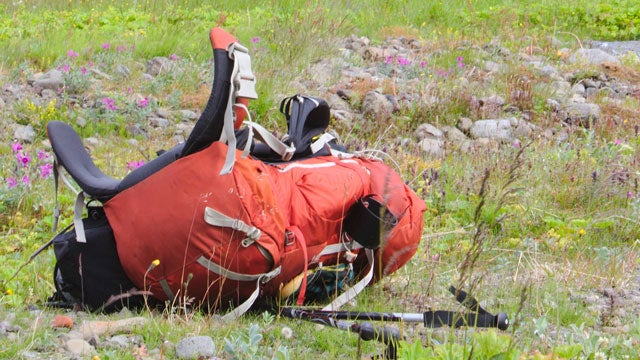
You know that sturdy old backpack—the one you got in college. Get rid of it. How about the white gas or old Coleman camp stove? Save it for car camping or sell it at your next garage sale. In the past five years, the top trend in backpacking gear has been to lighten up.
Many tents, including (2 lb. 2 oz., $370), are now made of silicone-impregnated nylon with fewer tent poles to take the load off. And sleeping tarps, like two-person 14 ounce Siltarp2 ($120) are increasingly popular for people willing to brave insect bites, or those hiking in climates with few biting insects. Stoves, like ’ Crux Lite (2.5 oz, $40) now weigh ounces instead of pounds. Sleeping pads are constructed to be insulating without heavy foam, like NeoAir XLite (12 oz, $160), and rain shells have become paper-thin, including ’s Helium (6 oz., $150) or (6 oz., $165).
Upgrade your gear for weight savings, and you’ll be in for a surprise—it probably works better. Modern tents have more liveable space, stoves are more efficient, sleeping pads put more cushion between you and the ground, and rain shells are more breathable. Select the lightest, most efficient gear appropriate to where and when you’ll be hiking. And don’t be afraid to replace one piece of gear at a time. Lightening you pack any amount is a move in the right direction.
Hiking Light: Carry Only What You Need
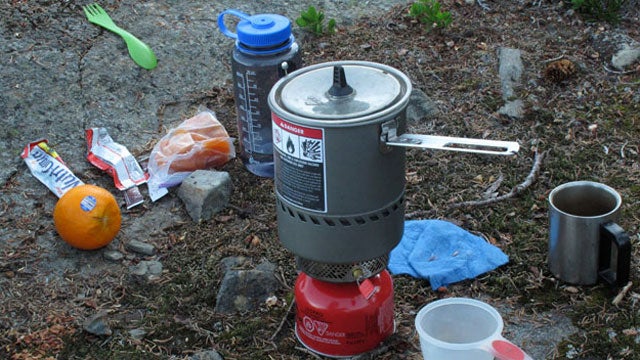
The number one way to lighten your load is to carry the bare essentials. Two obvious targets: Your campsite lighting and cooking equipment. Candles or LED lanterns for ambiance are lovely when you’ve driven to your campsite, but when you’re carrying your load, leave them home. Choose a light and powerful headlamp, the lightest is ’s e+lite (sub 1 oz., $30) and focus on the practical not the romantic. Do you really need a pot large enough to cook food, or is one that heats water and doubles as a cup good enough? We say yes, and like ’s Sol Ti (8.5 oz., $150).
Hiking Light: Share Your Gear
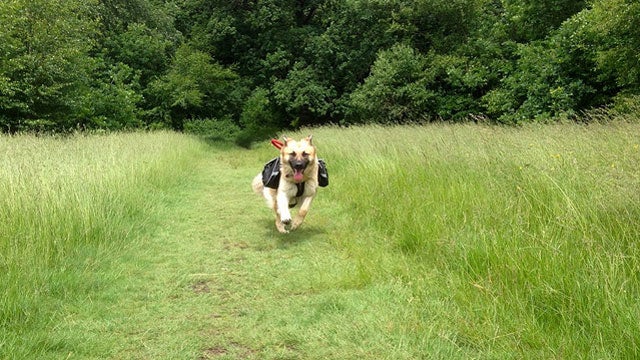
Backpacking with a friend? Share gear. One tent is lighter than two, and splitting the weight of a stove and gas, pots and pans, a water filter, and first aid kit can mean significant weight saving.
Going it alone? Choose gear that can serve multiple purposes. Your cooking pot should double as a bowl and/or cup. Bring a lighter sleeping bag, and sleep in your baselayers or down puffy for optimum warmth. A down jacket also makes a great pillow. Use a buff as a sweatband and a hat. And if you’re hiking with your dog—get him his own , like ’s Palisades ($130). A young and healthy dog can carry about 25 percent of its body weight safely.
Hiking Light: Slim Your Kicks
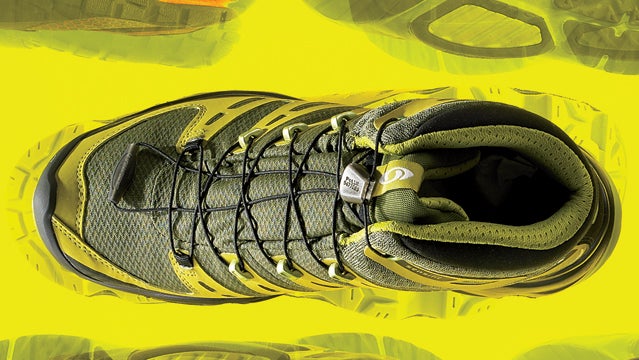
In 2011, when Jennifer Pharr Davis set the Appalachian Trail speed record, she wasn’t wearing heavy leather hikers. She was in a pair of Salomon Synapse—low cut, light-weight, and practically a running shoe. Extra weight on your feet takes more energy to move. An oft-quoted theory calculates that a pound on your foot equals five pounds on your back.
Plenty of light hikers and burly running shoes have a solid shank to protect your feet from rocks and other trail debris, while at the same time supporting them for long miles. If you train the muscles in your feet like you train the rest of body, they’ll take the brunt of trail miles better regardless of your footwear. Light hikers and trail shoes are available in both low and high cut versions. We like ’s Proterra Sport (1 lb. 7 oz., $100) and for those whose feet are barefoot ready, (11 oz., $140).
Hiking Light: Shed Water Weight
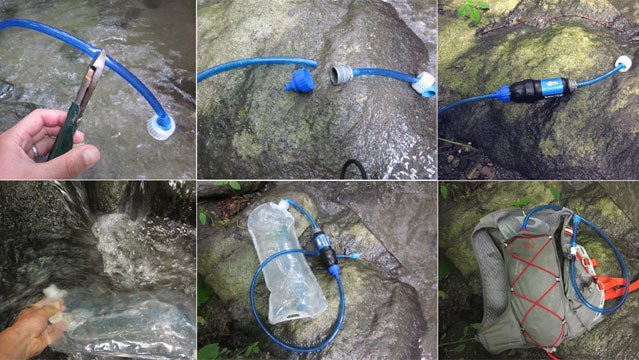
Of all the things in your pack, water likely weighs the most by volume. Think about it: One gallon weighs about 8.35 pounds. If you’re in the desert, or on a hike where water is scarce, you’ll need to carry enough to drink. But plan your meals carefully, evaluating if it makes more sense to pack foods that don’t require cooking water.
If you’re hiking along a stream or river, you may not need to carry more than a liter of water at a time. When it’s gone, refill your bottle and treat its contents with pathogen killing chlorine dioxide pills or choose a system, like Sawyer’s ($40) that’s lightweight to filter out the dangers.

